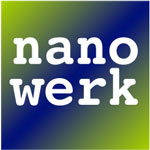Showing Spotlights 305 - 312 of 319 in category All (newest first):
 Among the many potential biology-related applications proposed for carbon nanotubes (CNTs) are high-sensitivity biosensors and bio-fuel cells. In order to create the synergy between the biomolecules and CNTs required to realize these applications, biomolecules, such as proteins and DNAs, must be connected to the CNTs.
Among the many potential biology-related applications proposed for carbon nanotubes (CNTs) are high-sensitivity biosensors and bio-fuel cells. In order to create the synergy between the biomolecules and CNTs required to realize these applications, biomolecules, such as proteins and DNAs, must be connected to the CNTs.
May 19th, 2006
 Researchers from the Zhengzhou Institute of Aeronautical Industry Management have developed a set of techniques to reduce the high cost of fabricating carbon nanotube field emission displays.
Researchers from the Zhengzhou Institute of Aeronautical Industry Management have developed a set of techniques to reduce the high cost of fabricating carbon nanotube field emission displays.
May 16th, 2006
 Carbon nanotubes have been converted to diamonds before but a group of researchers in the PR China and the UK now managed to do this at a very low pressure of only 80 megapascal.
Carbon nanotubes have been converted to diamonds before but a group of researchers in the PR China and the UK now managed to do this at a very low pressure of only 80 megapascal.
May 2nd, 2006
 As a novel superstructure, single-walled carbon nanorings exhibit interesting transport properties, such as Aharonov-Bohm effects, magnetotransport or establishment of persistent currents. Researchers in China have developed a new technique to produce large quantities of small-diameter single-walled carbon nanotube (SWNT) nanorings.
As a novel superstructure, single-walled carbon nanorings exhibit interesting transport properties, such as Aharonov-Bohm effects, magnetotransport or establishment of persistent currents. Researchers in China have developed a new technique to produce large quantities of small-diameter single-walled carbon nanotube (SWNT) nanorings.
Apr 24th, 2006
 Building reliable interconnections between carbon nanotubes (CNTs) and external electrical and mechanical systems is an essential prerequisite to exploring the potential of CNTs in various domains. The formation of a stable and low-resistance ohmic contact between CNTs and electrodes contributes to speeding up the development of applications with CNTs in nanoelectronic devices with small size, fast speed and low power dissipation.
Building reliable interconnections between carbon nanotubes (CNTs) and external electrical and mechanical systems is an essential prerequisite to exploring the potential of CNTs in various domains. The formation of a stable and low-resistance ohmic contact between CNTs and electrodes contributes to speeding up the development of applications with CNTs in nanoelectronic devices with small size, fast speed and low power dissipation.
Apr 19th, 2006
 There is universal consensus among scientists and researchers that more work is needed on all of the new carbon nanomaterials that have been developed over the past years to adequately assess their toxicity and health risks. A recent review addresses the current status, trends and perspectives of this issue.
There is universal consensus among scientists and researchers that more work is needed on all of the new carbon nanomaterials that have been developed over the past years to adequately assess their toxicity and health risks. A recent review addresses the current status, trends and perspectives of this issue.
Apr 18th, 2006
 Researchers in Finland and The Netherlands demonstrated that it is possible to grow and wire a single platinum nanoparticle using a single-walled carbon nanotube, thus providing a bottom-up approach to building nanoelectrodes.
Researchers in Finland and The Netherlands demonstrated that it is possible to grow and wire a single platinum nanoparticle using a single-walled carbon nanotube, thus providing a bottom-up approach to building nanoelectrodes.
Apr 5th, 2006
 Carbon nanotubes ((CNTs) are five times less dense than steel and approximately 30 times stronger. Their mechanical properties make them ideal candidates for the mechanical reinforcement of polymers.
Carbon nanotubes ((CNTs) are five times less dense than steel and approximately 30 times stronger. Their mechanical properties make them ideal candidates for the mechanical reinforcement of polymers.
Apr 3rd, 2006
 Among the many potential biology-related applications proposed for carbon nanotubes (CNTs) are high-sensitivity biosensors and bio-fuel cells. In order to create the synergy between the biomolecules and CNTs required to realize these applications, biomolecules, such as proteins and DNAs, must be connected to the CNTs.
Among the many potential biology-related applications proposed for carbon nanotubes (CNTs) are high-sensitivity biosensors and bio-fuel cells. In order to create the synergy between the biomolecules and CNTs required to realize these applications, biomolecules, such as proteins and DNAs, must be connected to the CNTs.
 Subscribe to our Nanotechnology Spotlight feed
Subscribe to our Nanotechnology Spotlight feed